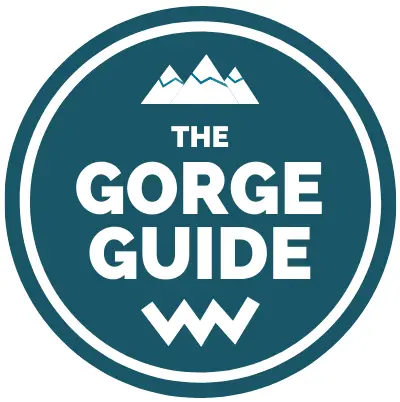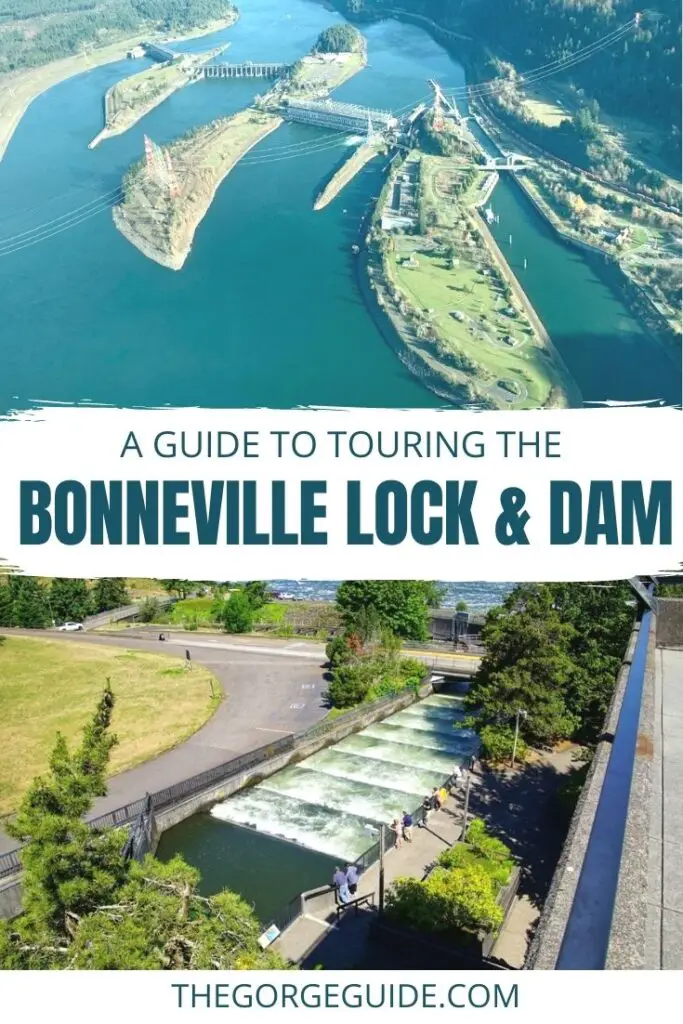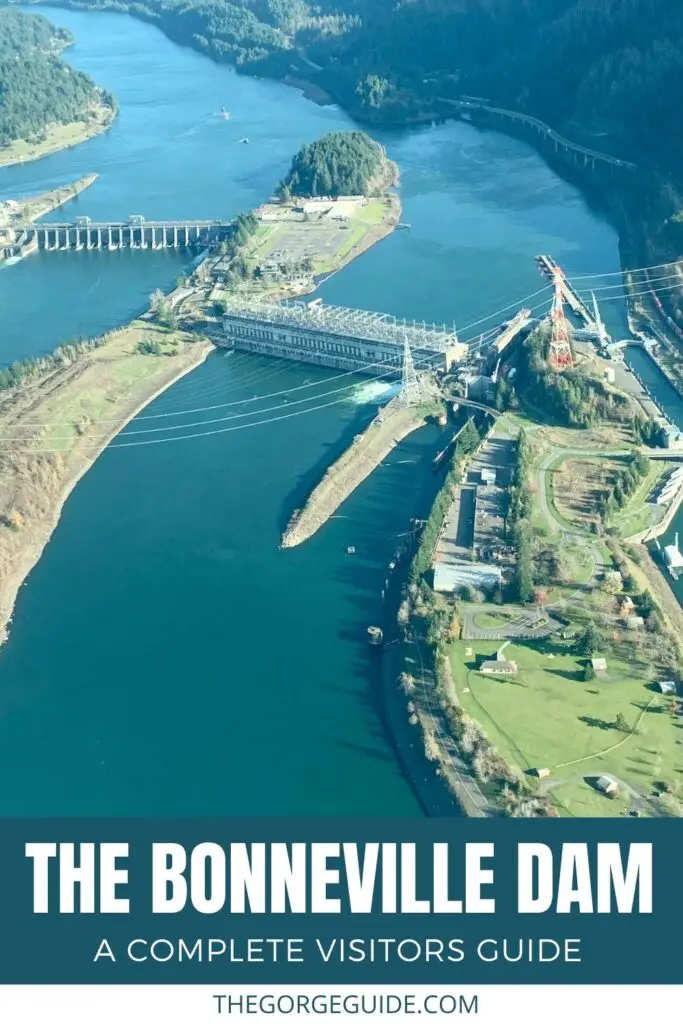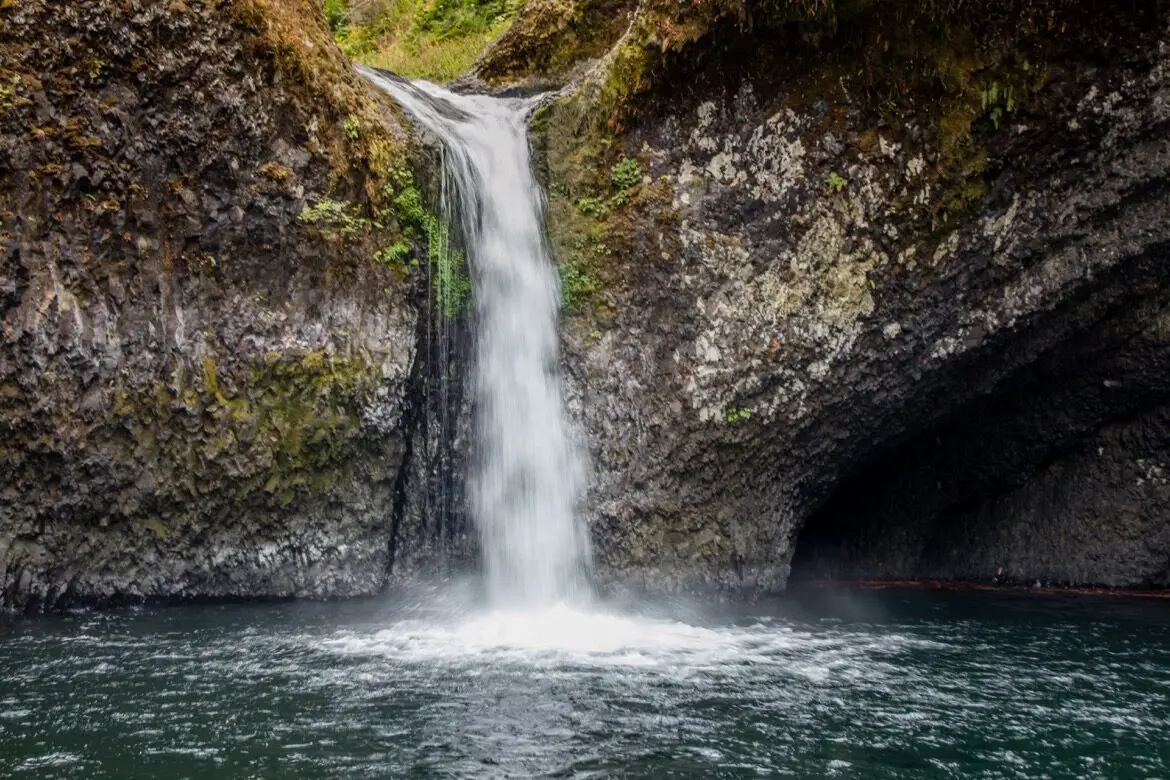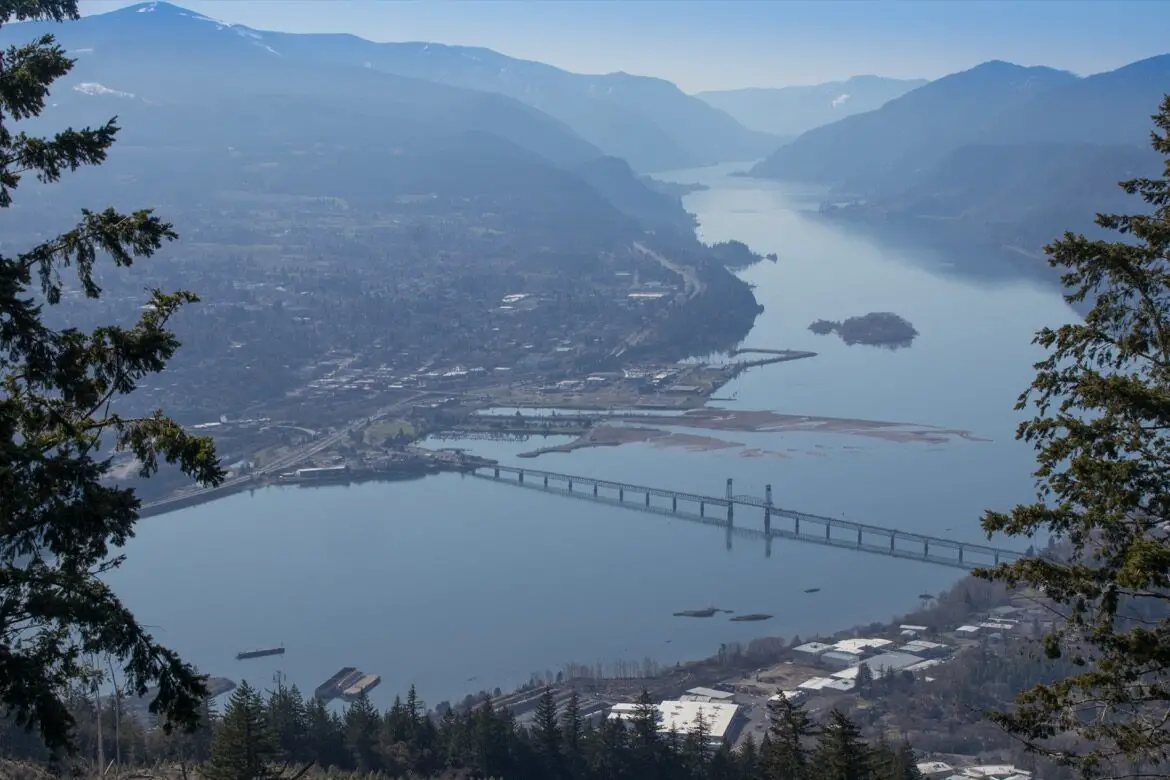Touring the Bonneville Dam visitor center
The Bonneville Dam is a feat of engineering in the Columbia River Gorge, recognized as one of the world’s largest hydroelectric systems and an important landmark that’s well worth a stop.
With two powerhouses, recreation areas, interpretive information centers and fish ladders, there’s plenty to see here which is why it’s an important education resource and particularly popular with school groups. The lock and dam spans across the river, making it accessible from both Oregon and Washington.
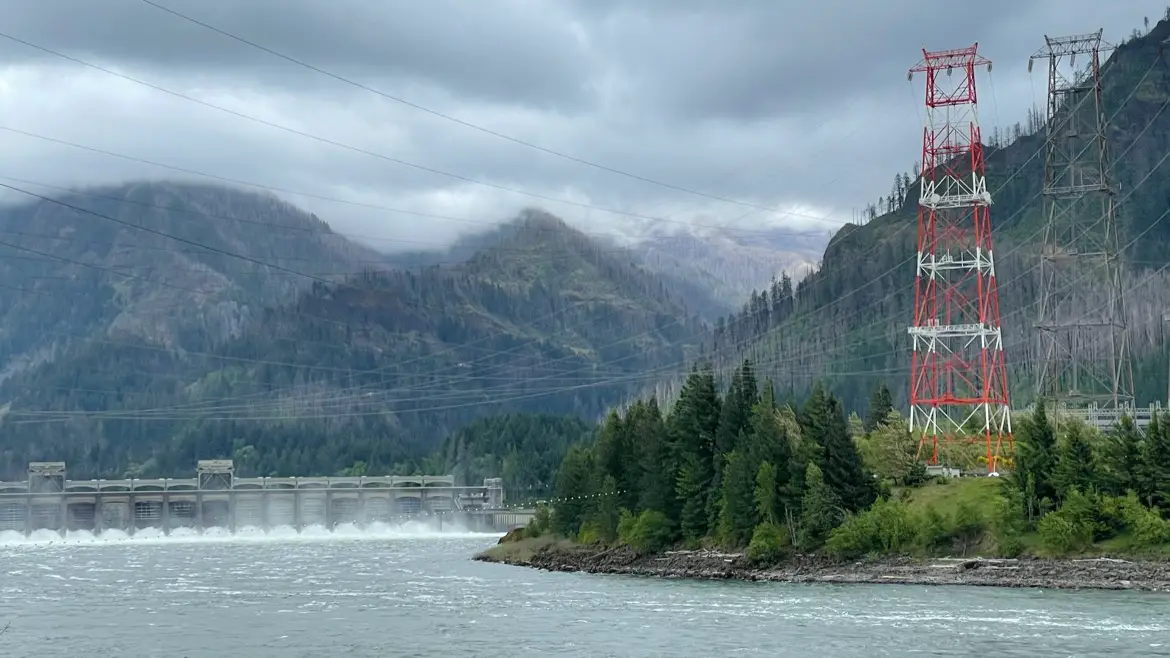
Table of Contents
History of the Bonneville Dam
The Bonneville Lock & Dam was the first federal lock and dam on the Columbia and Snake rivers, designed to improve navigation and provide hydropower through the Pacific Northwest. Built and operated by the U.S. Army Corps of Engineers, the spillway, original lock and first powerhouse were finished in 1938, and at the time the Historic Bonneville Lock was the largest single-lift lock in the world.
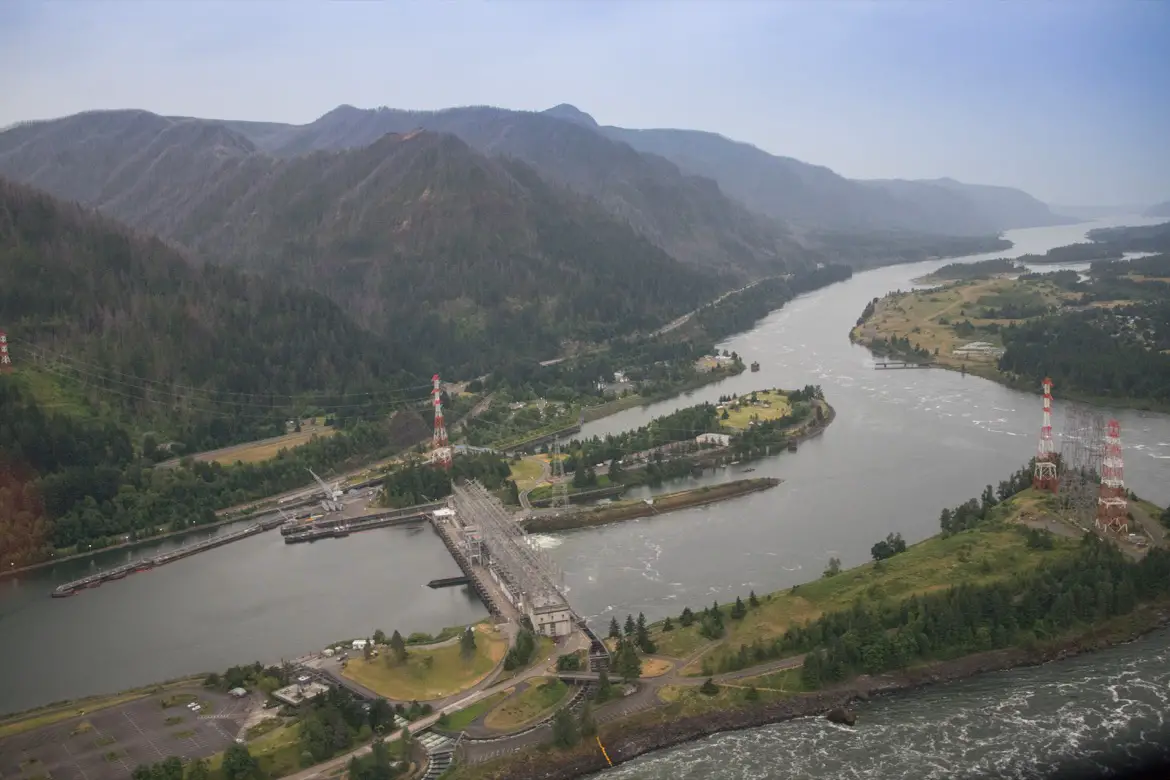
A second powerhouse was added in 1981, and a larger navigation lock (the Bonneville Lock) followed a few years later. It’s 86 feet wide, 675 feet long, and has reduced lockage time from several hours to less than 30 minutes. The site was declared a National Historic Landmark in 1987, and is along the Lewis and Clark National Historic Trail.
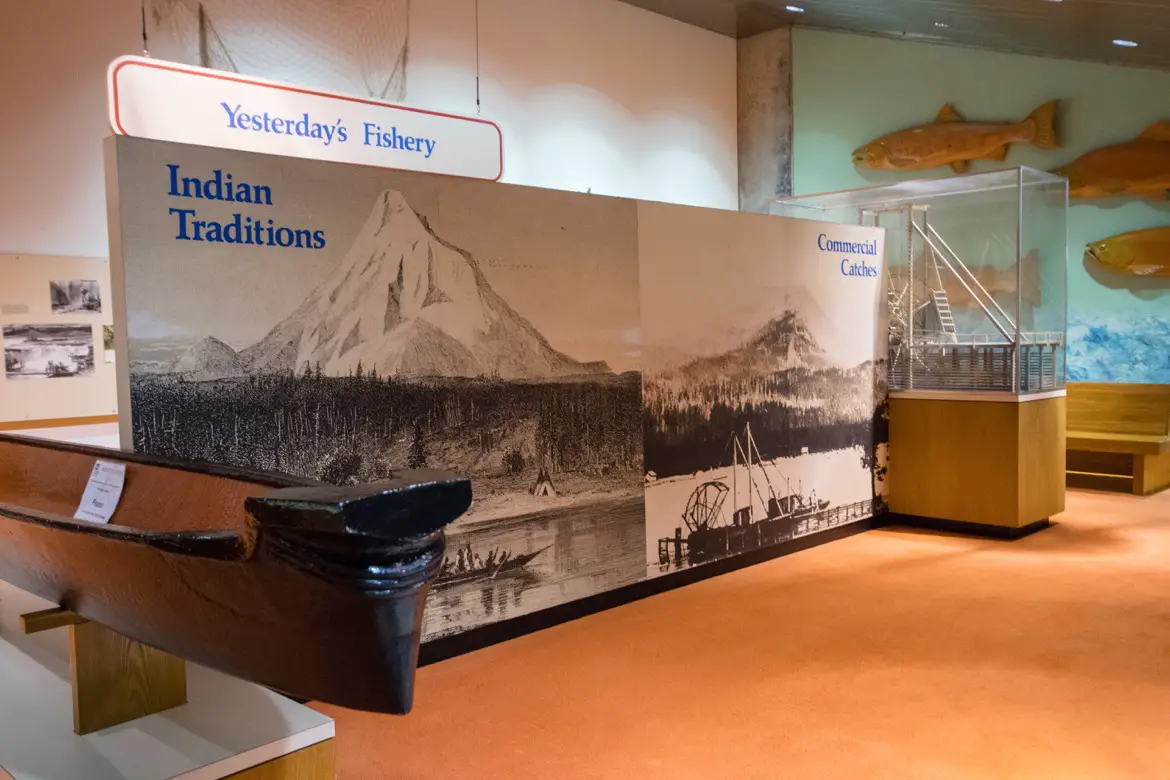
Touring the Bonneville Dam visitors center
There are visitor centers on both the Oregon and Washington sides of the river, as well as a seasonal one called the Navigation Lock. Parking and admission is free.
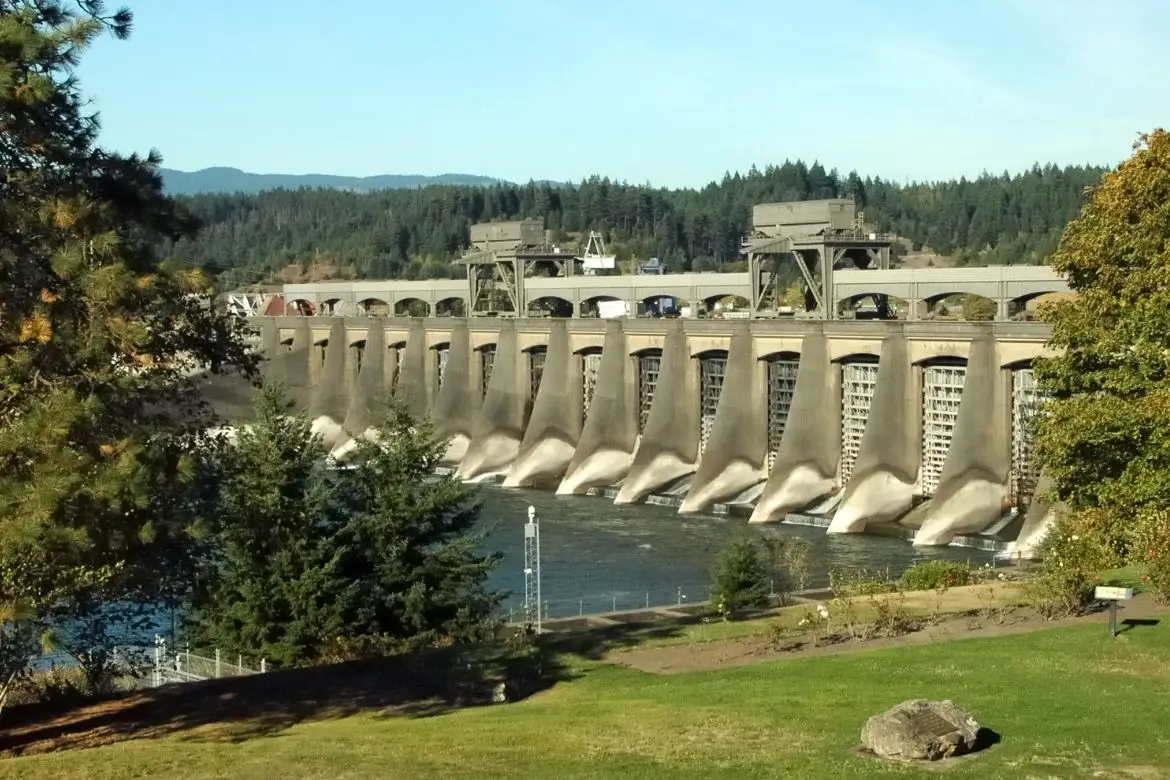
The Bradford Island Visitor Center in Oregon is located just past Cascade Locks, and has exhibits detailing construction of the dam, the history of the area and the life-cycles of salmon. There’s a rooftop observation deck with views of the Columbia River Gorge, as well as a chance to peer down into a ‘fish ladder’ and watch salmon, sturgeon, shad and Pacific lamprey make their way through.
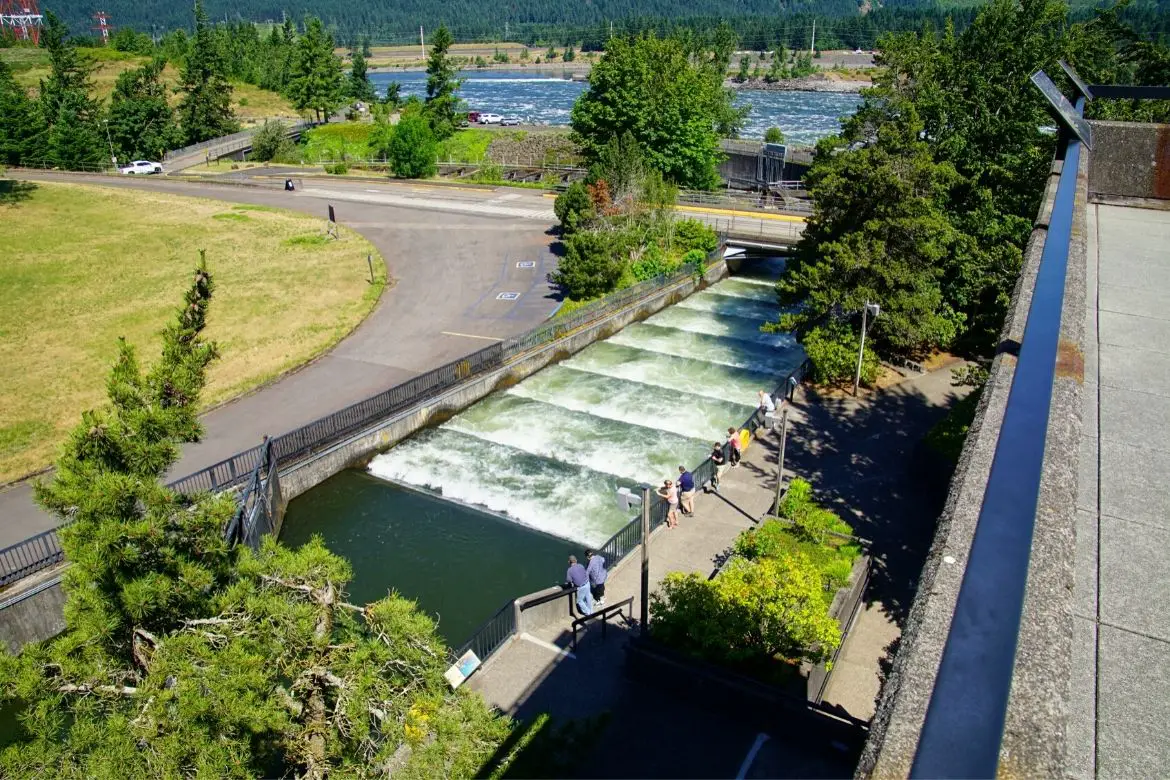
Over on the Washington side near the town of Bonneville and the Bridge of the Gods, the Washington Shore Visitor Complex has similar exhibits like a fish viewing building, information about the region’s Indigenous history and the importance of fisheries in the area. However, it also has one of the world’s most accessible views of a working powerhouse, and visitors can cross a walkway and look 85 feet down to see the working floor.
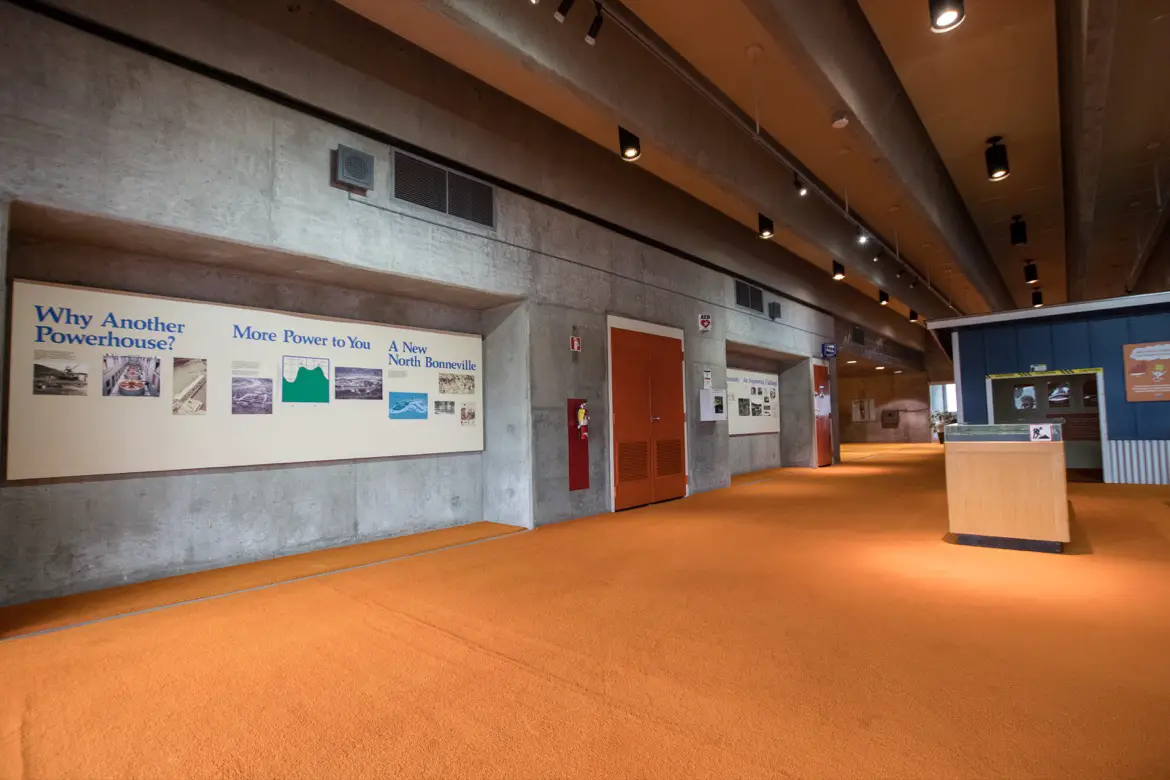
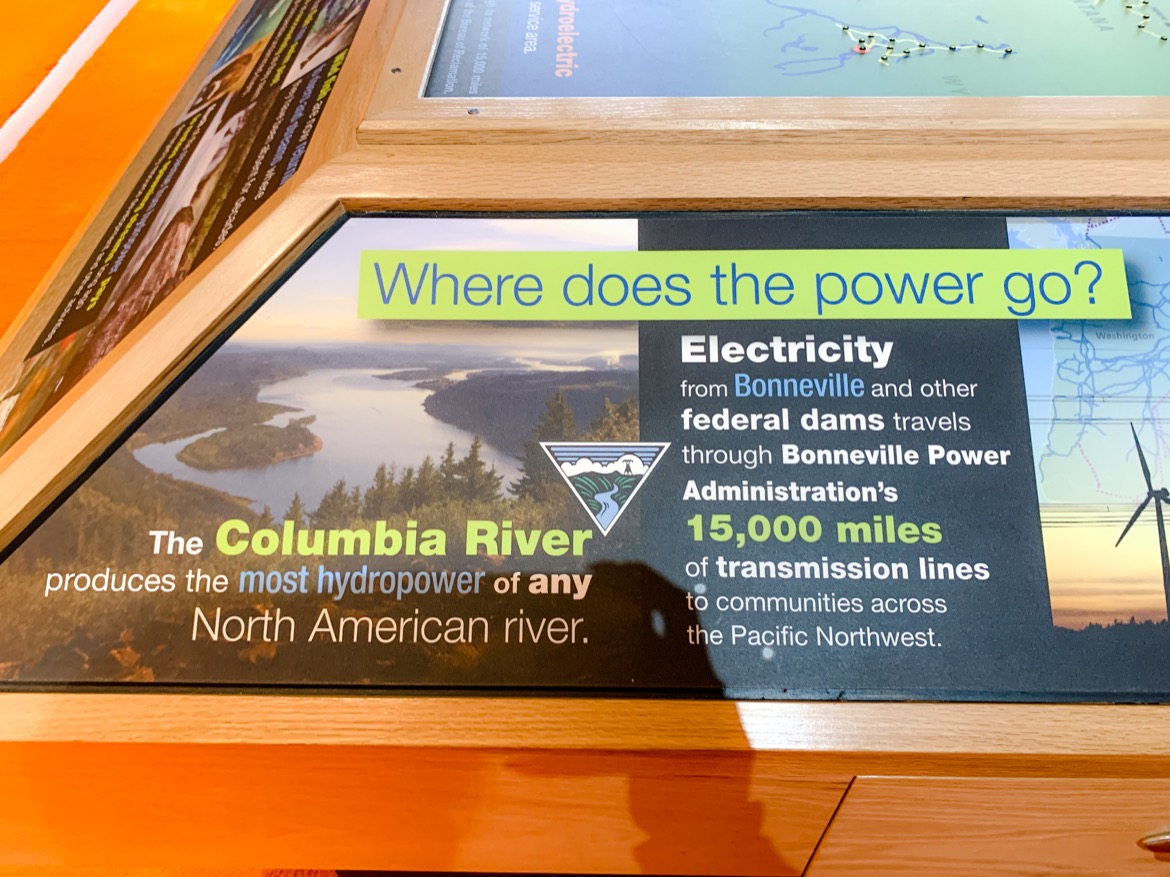 An escalator ride down gives a closeup view of a rotating turbine shaft and generator, and there are a number of interactive exhibits highlighting the history and importance of hydro power along with energy saving techniques. Today, the two powerhouses produce five billion kilowatts of electricity each year, providing power for 80 per cent of the PNW.
An escalator ride down gives a closeup view of a rotating turbine shaft and generator, and there are a number of interactive exhibits highlighting the history and importance of hydro power along with energy saving techniques. Today, the two powerhouses produce five billion kilowatts of electricity each year, providing power for 80 per cent of the PNW.
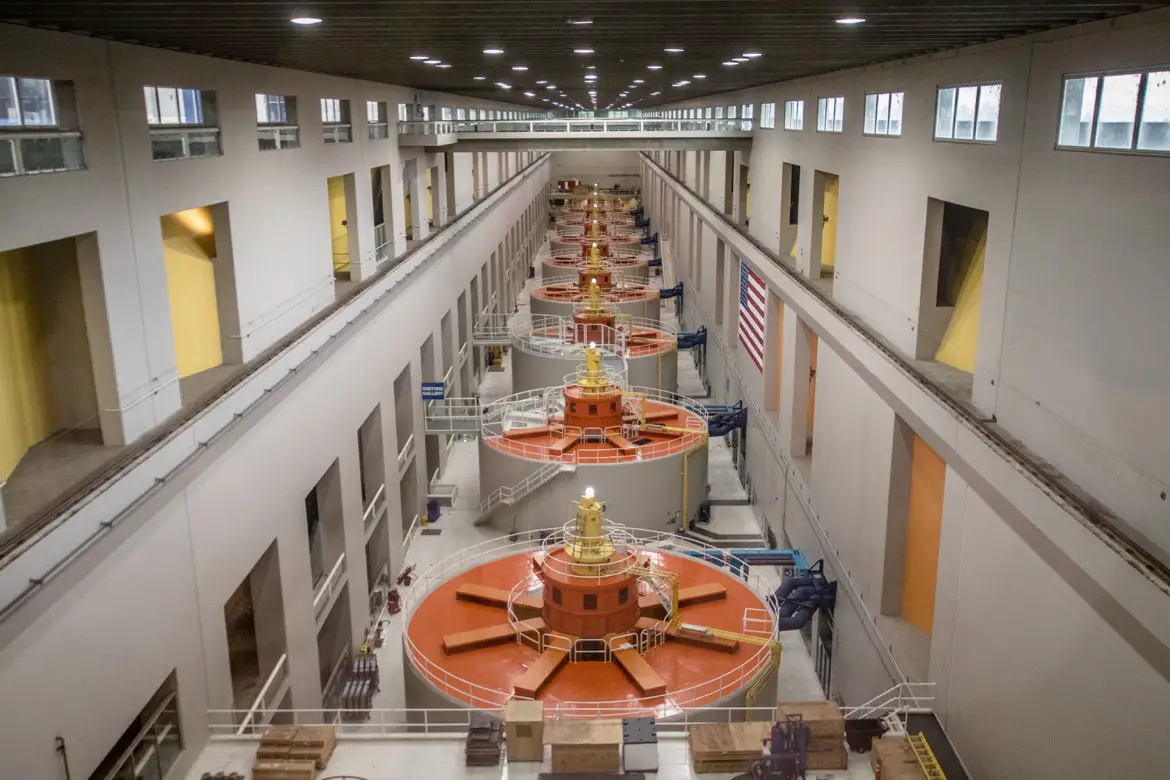
The Bonneville Dam Fish Ladder
Kids are sure to be wowed by the fish ladders on both the Oregon and Washington shores, which are passageways for fish that seasonally migrate upstream. A number of weirs with openings along the bottom form steps, allowing the fish to swim from one pool to the next for an elevation gain of 60 feet. This allows them to get past the Bonneville Dam, and return to their spawning grounds.
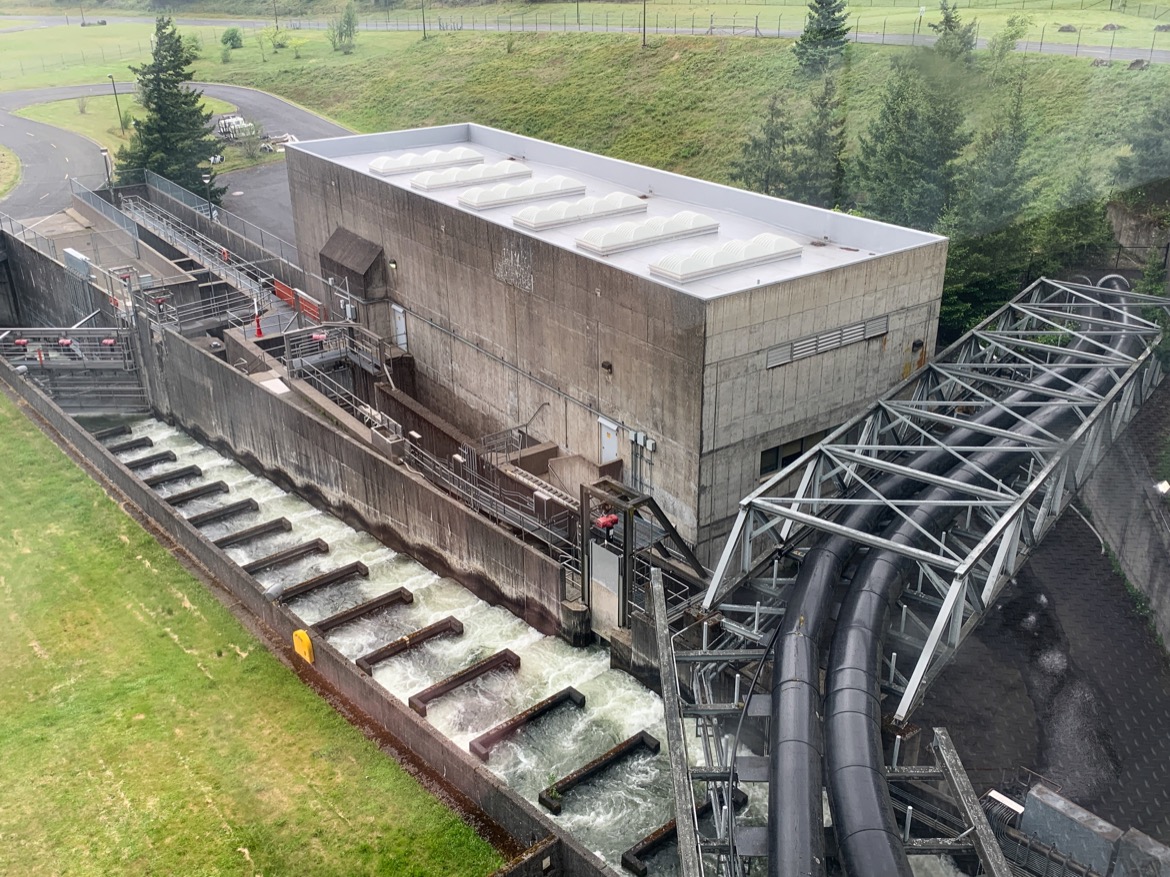
Heading inside, there are large underwater windows where guests can watch the fish pass by, and the best times to spot them are:
- Steelhead: August
- Chinook: September
- Coho: September
- Sockeye: June and July
- Shad: June
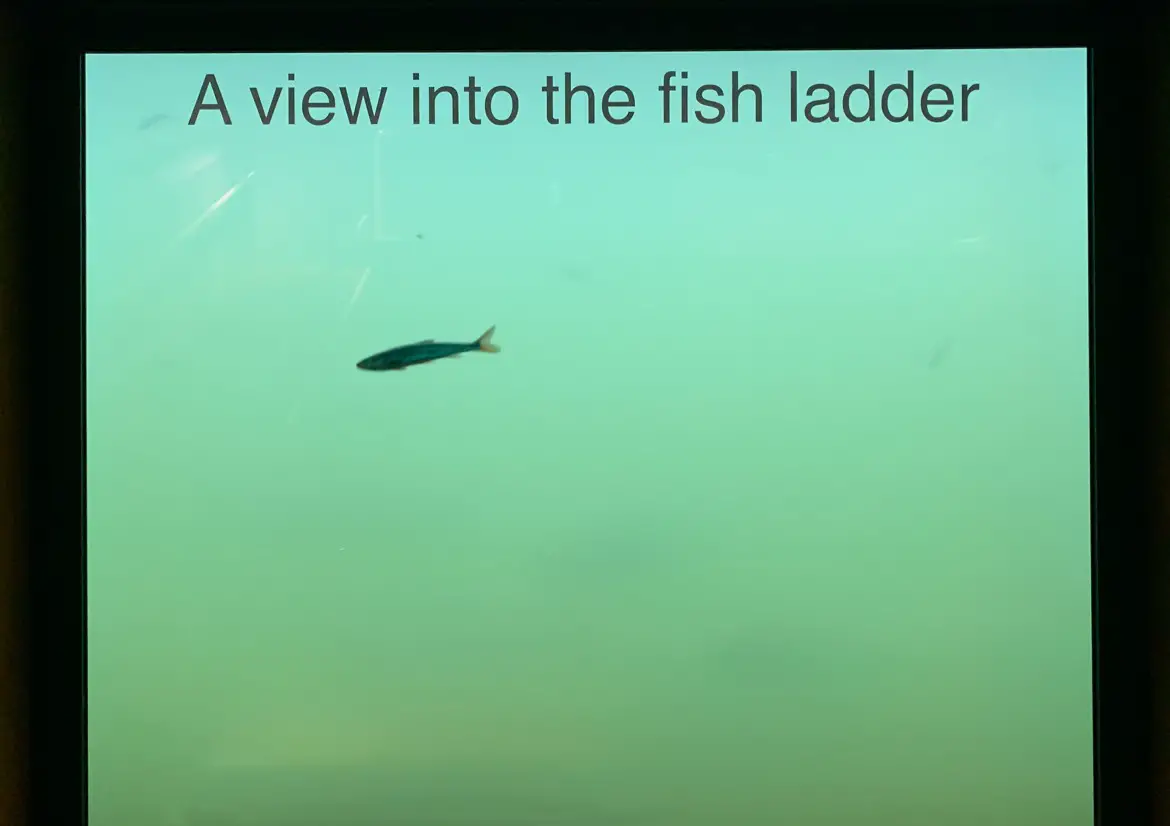
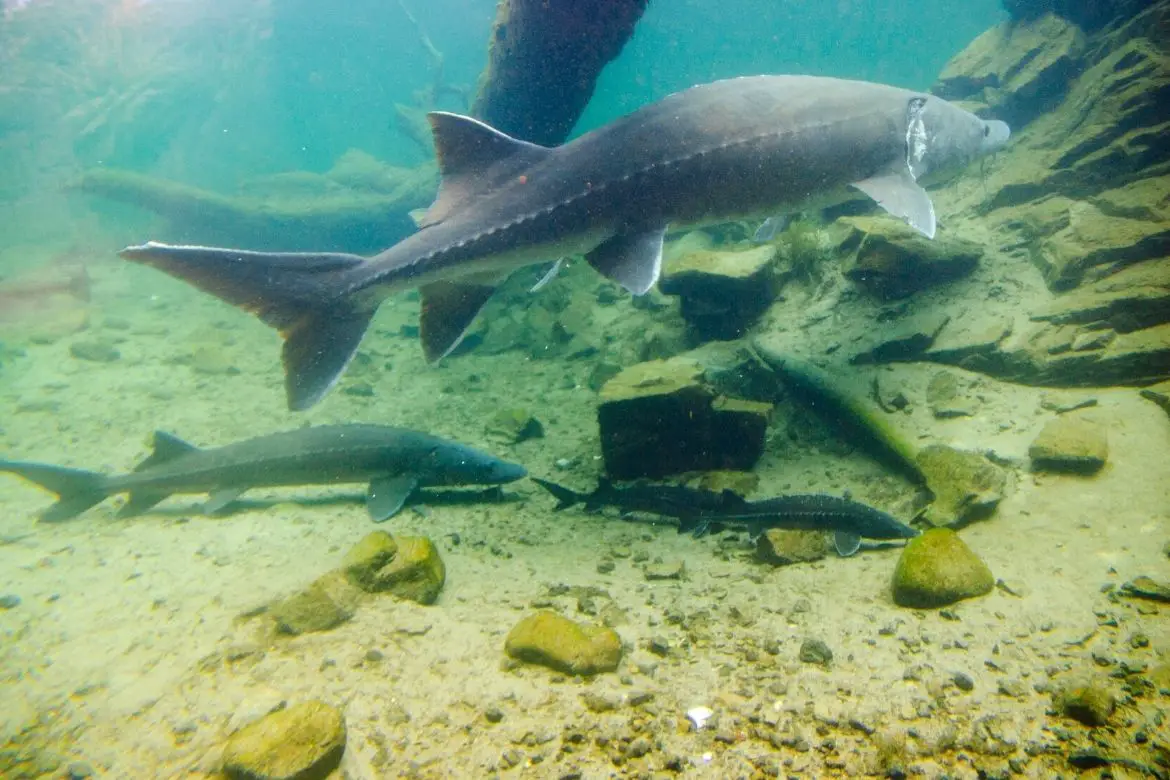 There’s also information about fish counting, where workers have counted and recorded every fish that’s moved through the ladder since 1938. It’s particularly impressive, considering up to 1.5 million salmon and steelhead migrate upstream each year, while between 24 to 43 million pass downstream.
There’s also information about fish counting, where workers have counted and recorded every fish that’s moved through the ladder since 1938. It’s particularly impressive, considering up to 1.5 million salmon and steelhead migrate upstream each year, while between 24 to 43 million pass downstream.
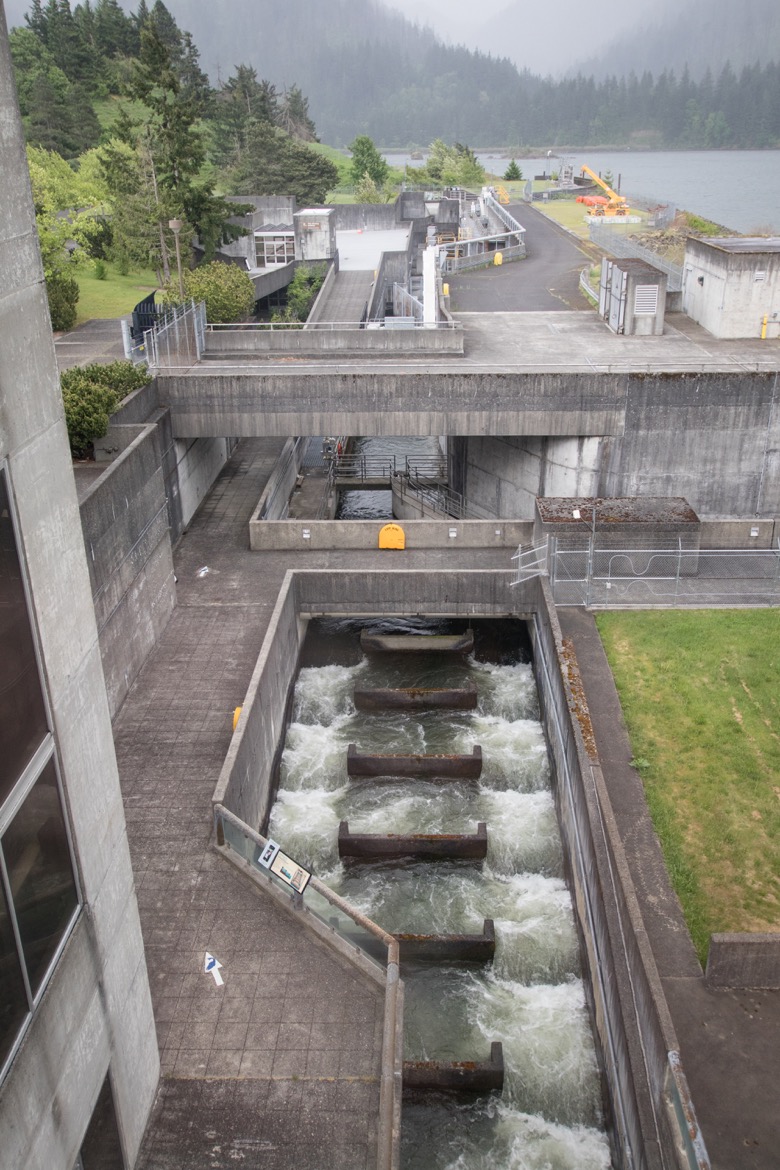
Bonneville Dam hours
The Washington and Oregon visitor centers are open from 9 am to 5 pm daily, except for Thanksgiving, Christmas Day and New Year’s Day. The Navigation Lock opens from 1-4 pm from Memorial Day weekend through Labour Day, and is a great spot to watch boats pass through the lock.
YOU MIGHT ALSO ENJOY:
- A complete travel guide to the city of White Salmon, Washington
- Fun things to do in Trout Lake WA
- The life-size replica of Stonehenge in Washington state
PIN TO SHARE:
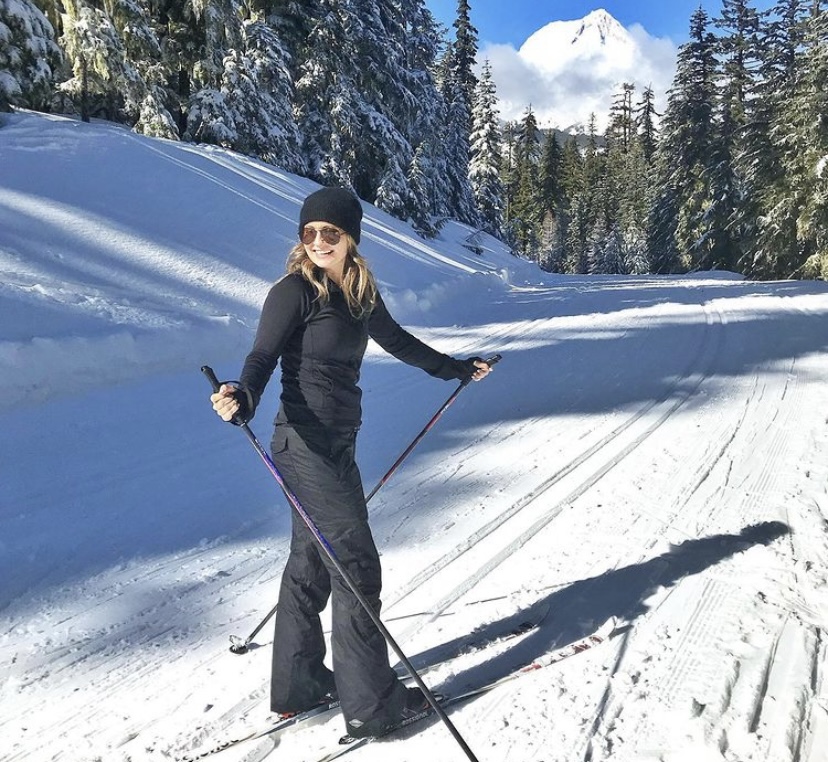
Tamara Elliott is the travel editor and founder of The Gorge Guide, which highlights the best experiences in the Columbia River Gorge. She’s an award-winning writer formerly based in Hood River, Oregon, who particularly loves the area wineries and waterfall hikes. Tamara is also the founder of Globe Guide, which offers savvy tips for exploring destinations around the world.


